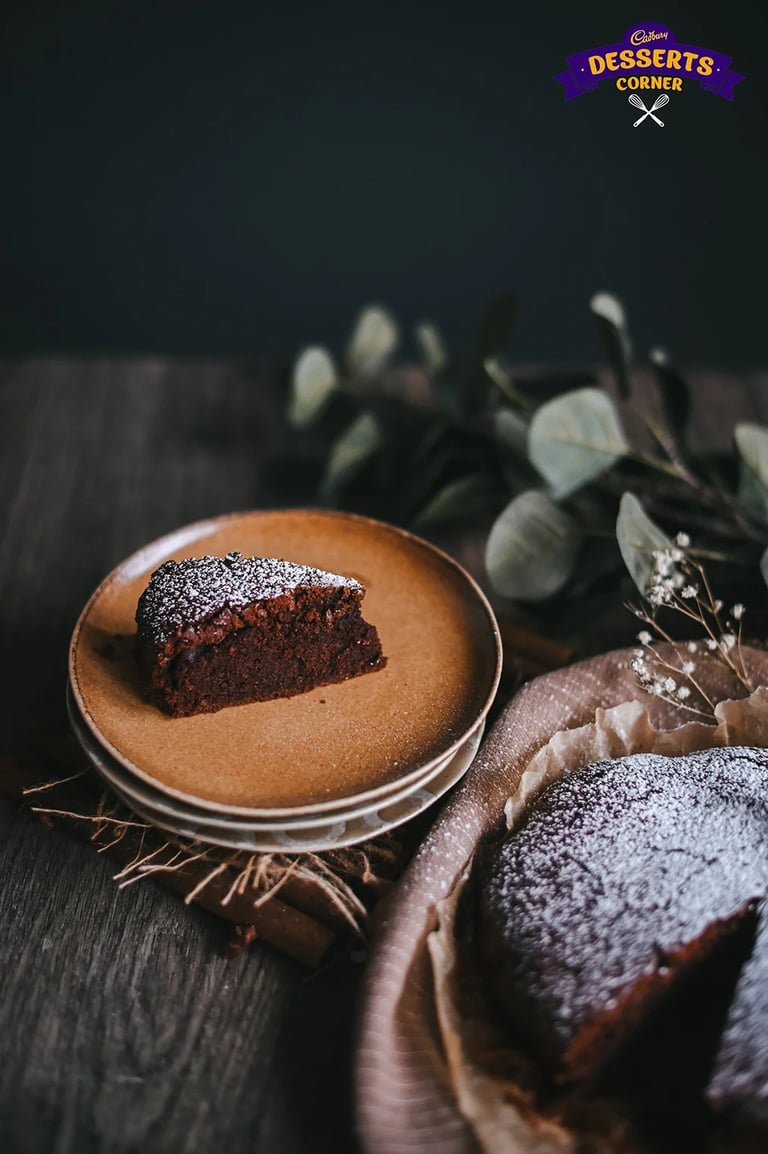Home![]() Articles
Articles![]() On National Chocolate Cake Day, We Have Its History and Types Right Here for the Baking Nerd in You
On National Chocolate Cake Day, We Have Its History and Types Right Here for the Baking Nerd in You
Chocolate Cake Day, celebrated on 27 January, is an amazing excuse to eat some cake. We suggest you couple that with this article about chocolate cake’s development and variations.

Ah, chocolate cake. The mouth just starts watering, doesn't it? It's one of those classics that entered the baking world, and now one can't imagine a world without it. Chocolate cakes come in all shapes and sizes. It can be a simple sponge cake or an elaborate three or four layered cake. It can be infused with citrus flavors or rose essence, fruits and nuts or coconut, or can be topped with a rich chocolate ganache. There are several types of chocolate cake. It's versatile and sits well with a variety of flavors, keeping its basic taste intact. It's also one of the first things many home bakers try their hand at. A mainstay at birthdays, gatherings and just about any celebration, chocolate cakes also sit well as an indulgent snack you're enjoying all by yourself. So on national chocolate cake day, here’s everything you need to know so you can properly celebrate this standout creation.
Interestingly, this global phenomenon is a relatively recent creation. Earlier, chocolate was a luxury for the elite. But in 1828, Conrad van Houten of Holland developed a method of mechanically extracting fat from cocoa liquor, which led to cocoa butter and partially defatted cocoa. This was then powdered and sold. Now, cocoa was more affordable and accessible. But up until the 1840s, chocolate was consumed primarily as a beverage. And ‘chocolate cake’ was simply a cake eaten with a chocolate beverage. Over time, people began using it in sauces and frostings, but it remained primarily an ingredient with which to make a drink.

In 1879, Rodolph Lindt invented the process of conching, which meant creating a silkier and smoother chocolate, which made it easier to infuse it into a cake batter and baking it became more popular. One of the earliest chocolate cake recipes in the US comes from the cookbook The Hostess of T-Day by Linda Larned, published in 1899. Although it's a cake made with cocoa, it's still different from the types of chocolate cake we see today. It would have been lighter in color since they used relatively less sugar and cocoa, and more flour, than modern cakes.
In the mid-1930s, Pittsburgh’s Duff Company introduced the Devil’s Food chocolate cake mix but this was shelved during the second world war. By the 1940s, Hersheys became deeply popular and baking with chocolate became a common practice across most households. Now, the cakes were becoming more indulgent, with more sugar and cocoa. They were becoming closer to the types of chocolate cake as we understand them today. Experimentation continued and in the 1990s, chocolate cakes with liquid, flowing centers became popular. Chocolate cakes were also being infused with flavors like tea, champagne and other inventive combinations.
All over Europe, different types of chocolate cake emerged and are popular delicacies today. Germany has the black forest cake, inspired by the country’s Black Forest mountain range. Its layers of cake and whipped cream, topped generously with chocolate shavings and cherries, and infused with kirschwasser (a brandy made from distilled cherries), make it a popular and delectable cake worth trying at least once. We’re sure you’ll keep coming back.

Another popular cake is Austria’s sachertorte. It was created in 1832 by Franz Sacher, a 16-year-old apprentice to a chef. It's sold primarily in Vienna and Salzburg and is essentially a two-layer sponge chocolate cake with an apricot jam between them. It's served with an unsweetened whipped cream. The cake’s recipe is registered by the Hotel Sacher in Vienna which was established by Franz’s son in 1876.
Another popular European cake is the Belgian chocolate cake, essentially a pound cake with a rich chocolate ganache. It's topped with chocolate discs and chopped nuts. It's known for its bittersweet taste, similar to rich and pure Belgian chocolate. It's a simple and flavorful cake, with no frills, its allure lying in its unique taste.
In France, chocolate cake was made not with flour but with a custard baked in a bain marie or over hot water. It's similar to a molten chocolate cake which also uses almost no flour. It calls primarily for eggs, butter, chocolate and sugar, and melts easily in the mouth.
There’s also the Hungarian chocolate mousse cake. A story goes that the famous gypsy violinist Rigo Jancsi played for Prince Josef and his wife Princess Klara in Paris in 1896. There was love in the air and Klara married the violinist. Although the marriage was short lived, Rigo created this cake with a confectioner in honor of Klara.























